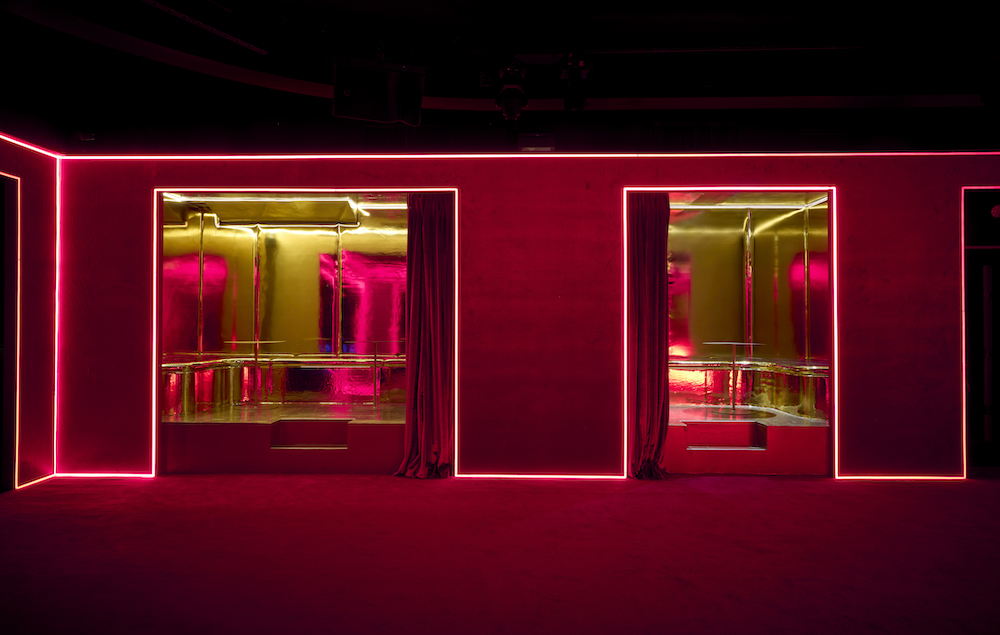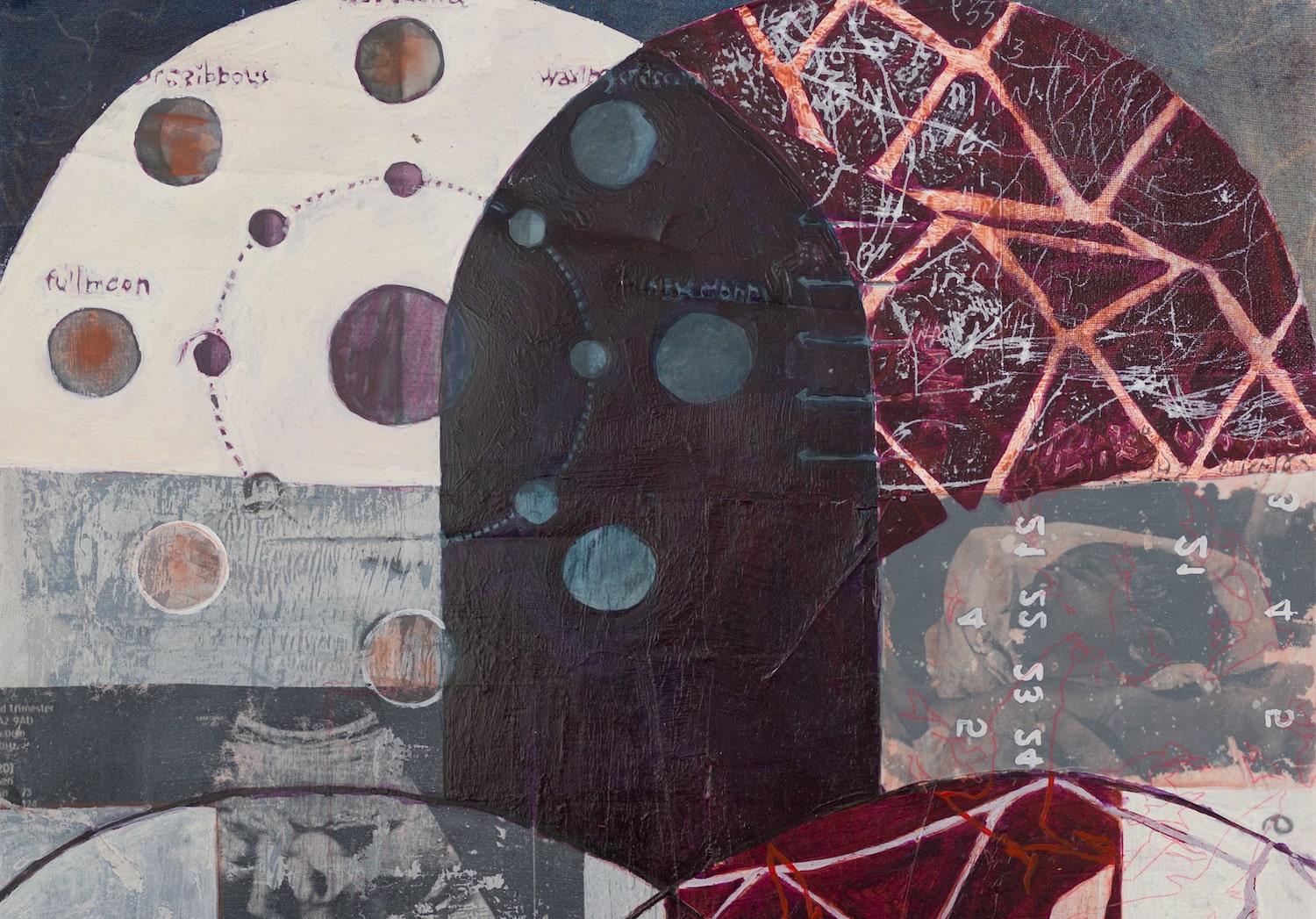You can’t help but feel there’s something cunning about the latest exhibitions from Josh Smith, currently being held simultaneously at Luhring Augustine’s galleries in Bushwick and Chelsea. While sharing few outward traits other than color, each respective display speaks to a number of Smith’s avowed artistic interests—the presence of the artist’s hand in his work, exploration through seriality, an insistence on degrading the “preciousness” of art—and all with generous and astute hints of irony. More than that however, these exhibitions make clear Smith’s adroit understanding of how he is perceived by the contemporary art community.
In an array that shows the childlike exuberance and spirit of exploration one’s come to expect from Smith’s work, his newest exhibition in Brooklyn houses 90 ceramic sculptures and a series of 19 surprisingly gratifying palm tree paintings.
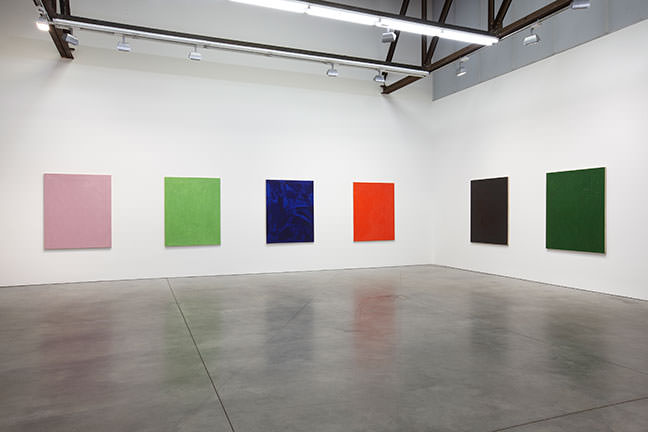
Luhring Augustine Chelsea
The ceramics on display, shown in installations of nine to 31 sculptures, include rough, hand-hewn icons, most of which fall in line with Smith’s symbolic lexicon of ghosts, jack-o’-lanterns, leaves, and skeletons, as well as clay bottles and cans created by molds presumably taken from detergent containers, salad dressing bottles, large tins, or the like.
While some of these re-appropriated consumer forms show loose and impulsive brush strokes that dress them in Smith’s name, others are more thoroughly manipulated, such as two ceramic cans that are re-imagined as a tower from which a small figure tries to escape. Stripped of their functionality, these everyday objects see their raison d’être replaced by the artist’s play with color, form, and texture. Some pieces, made to resemble decayed bottles or cans-turned-rocket-ship, even go so far as to conjure political ideas in regard to waste and technology.
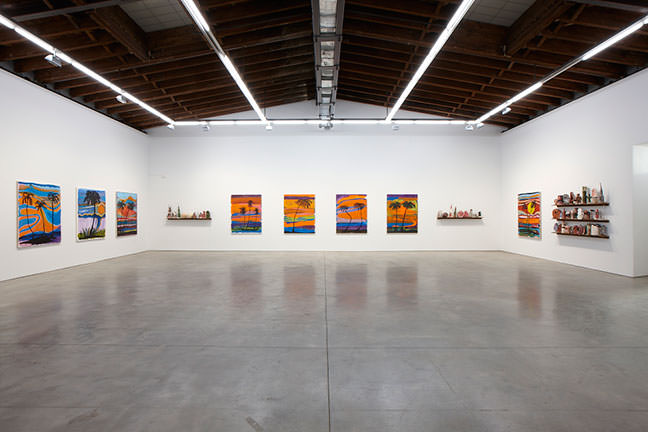
September 13 – October 19, 2013
Filling out the rest of the one-room Bushwick gallery, Smith’s large oil on panel paintings present black palm trees silhouetted against setting orange suns and beautiful abstract washes of swirling colors that range from four to more than ten different hues. A series that speaks to Smith’s established motif of sunsets, the paintings’ generic, even kitsch, subject matter—which can’t help but recall Floridian postcards or ‘80s tropical art—leaves the work feeling reactionary.
Criticized in the past for creating paintings that eschew beauty, perhaps to a detriment, it’s hard looking at Smith’s palm trees without feeling as though he’s making an active choice to provide the viewer with what’s supposed to be “pretty,” all the while thumbing his nose by way of the arguably trite subject matter. That said, to subtract the confident black brush strokes that define each tree still leaves virtuoso abstract compositions that are to be admired. And so these paintings beg the question: has Smith taken something he knew was visually appealing and made it “pretty” with palm trees just to spite us?
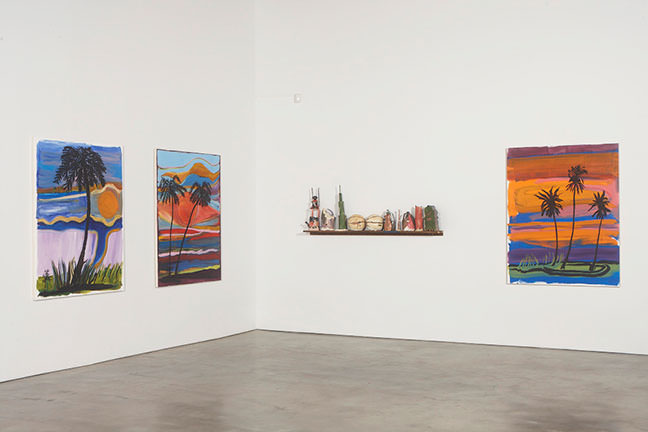
Photo by Farzad Owrang
The answer, and an indicator as to the potential self-consciousness of Smith’s current work, was found the following night at his exhibition in Chelsea—a show described as “shocking” by more than one gallery-goer. After all, who would have suspected a series of monochromes from the visually verbose Josh Smith?
Including 19 oil on panel paintings spread throughout two rooms, Smith’s Chelsea show explores the language of the monochrome in a palette shared with the abstract backgrounds of his palm tree paintings. More Rauschenberg than Klein, Smith’s monochromes are each named after the color they represent and—thanks to a dynamic application of paint and acute attention to texture—straddle a line between expressionism and minimalism.
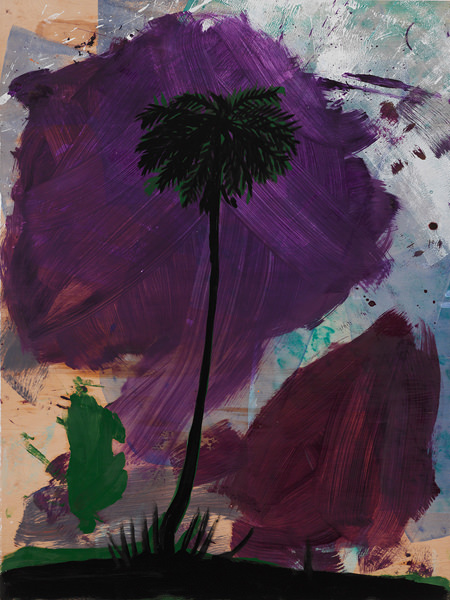
Installation view
Rather than assault the viewer with a flat, perfectly uniform color, Smith’s approach leaves evocative, emotionally resonant highlights within each single-hued piece, replacing the arresting affect of Klein’s IKB monochromes with expressive marks that beg interpretation. Stripped of the machine-like precision of so much minimalist art, Smith’s paintings prove eminently approachable. (Example: the night was spent with viewers clamoring to be photographed in front of the monochrome that best matched their outfits.)
For this reason, both the palm tree paintings and monochromes seem to stand apart from Smith’s greater oeuvre. After all, his artwork is not known for its traditional beauty or accessibility. Moreover, both series of paintings instill the feeling that Smith has been reading what’s been written about him, digested those criticisms—which generally regard aesthetic appeal and other conventionalized markers—and replied in the form of artwork that sends up the absurdity of such conventional arguments.
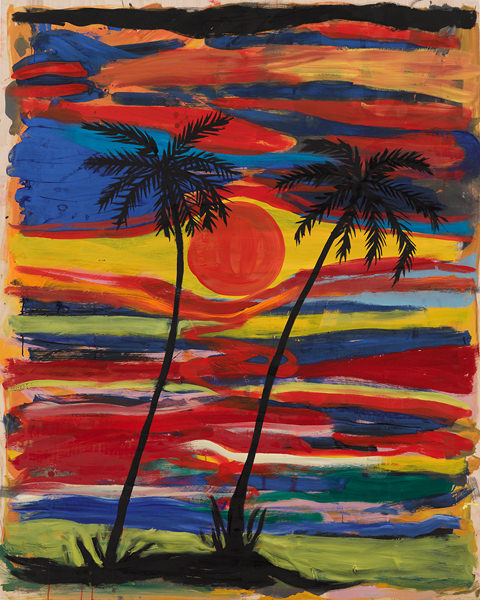
Luhring Augustine Chelsea
To achieve this he shows us his ability to make something sincere and beautiful in the tantalizing backgrounds of his palm tree paintings, only to overwrite that content with an ironic reminder of “pretty” in the form of a tropical tree’s silhouette. In a likewise fashion, his flippant monochromes stand as evidence of the artist’s knowledge of color as that which emotionally sates us, while simultaneously recalling the existentialist, art-abolishing connotations inherent to monochromatic compositions.
After years atop the contemporary art scene, it feels as though Smith is talking back to his community. And the response, as seen in his choice of subject and artistic treatment, is intellectually astute, executed with enviable skill, and not without humor. It’s a sincere “screw you.” And saying so is no criticism.
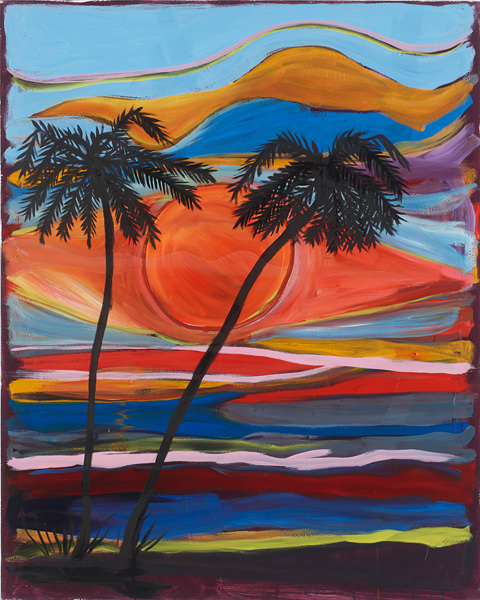
September 13 – October 19, 2013





